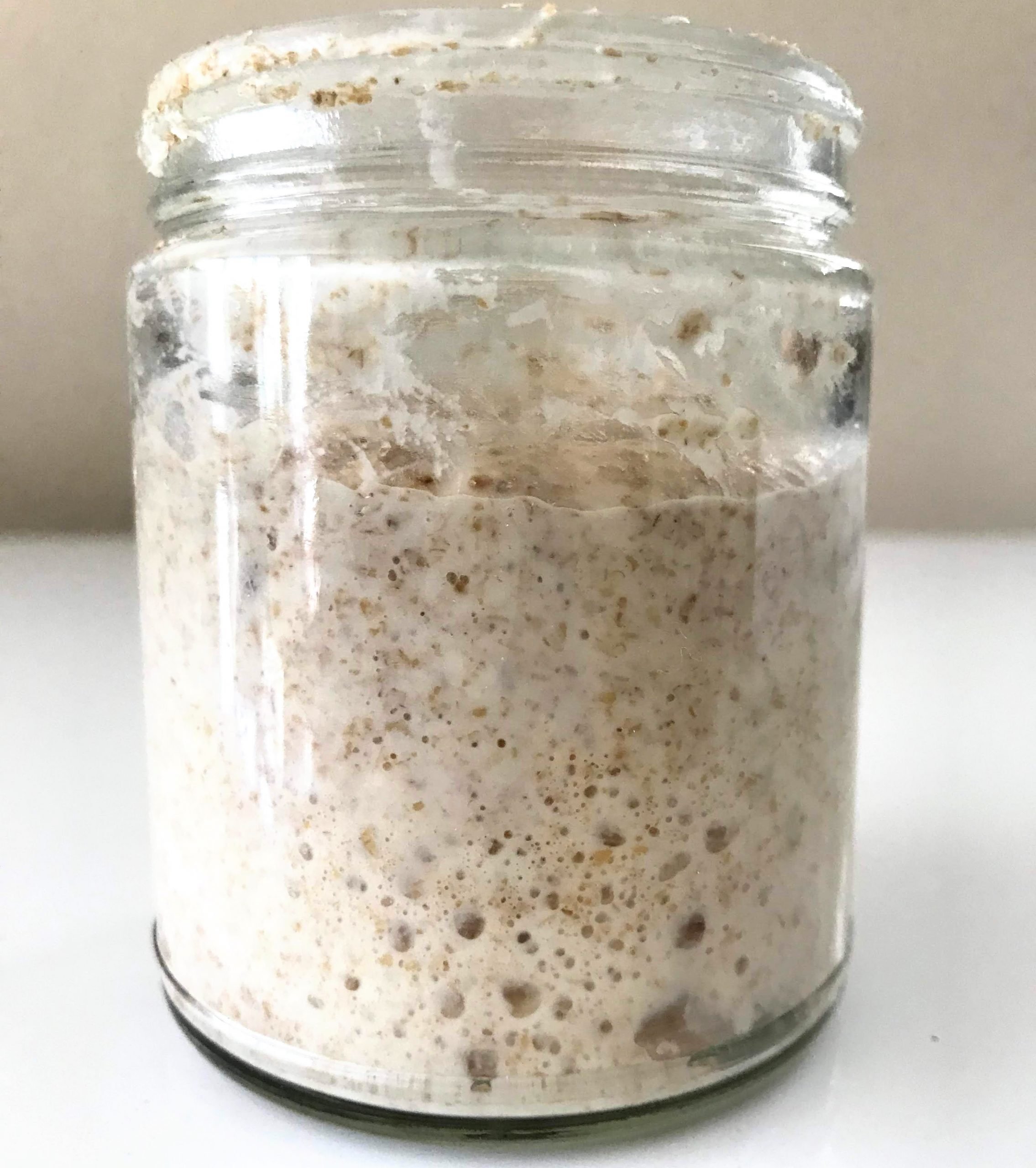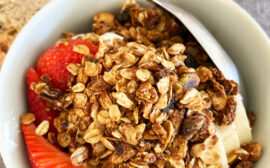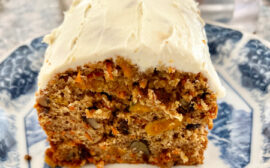All you need to make a sourdough starter is flour, water, and time.
Just a couple of things before we start...
- When I started brewing my sourdough starter last August it took me ten days to make my starter. Or in other words, active enough to use for baking.
- I like to work with small portions of water and flour to build up the starter, this way it helps to limit the build-up of sourdough discards*.
- However, there are many wonderful recipes that use sourdough discards. Sometimes I make extra sourdough discards just to make these recipes.
- Will you be giving a name to your sourdough starter? Well, meet Yoda. Small but powerful.
What are sourdough discards? It is the excess portion of the sourdough starter that is discarded during the feeding process. The reason to discard a portion of the sourdough starter is that only a portion of the starter is fed with water and flour to avoid feeding the entire batch. Otherwise, the volume of the starter, flour, and water needed for feeding will end up increasing exponentially.

Material:
- Prepare two glass jars with lids. Also, make sure the glass jars are clean. It is best to switch the jars every day to wash until the starter is complete.
- Scale
- Silicone kitchen Spatula
- 200 grams of unbleached white all-purpose flour and whole wheat flour each. Or premix 200 grams of each flour (or ratio 1:1) in a container for easy access.
- Distilled water (When using tap water let it sit for 30 minutes to 1 hour for the chlorine in the water to evaporate.)
Making the sourdough starter:
Things to remember:
- Feed the starter at the same time each day.
- Dispose of the early discarded starter until the batch that is ready for baking, then start to save the discards in the refrigerator.
- Keep in constant room temperature somewhere like in the oven or microwave.
- Loosely cover the lid of the jar.
- Be patient.
Steps to make sourdough starter (Day 1 - 6):
- In a jar with a lid, measure and mix the amount of flour, water, and starter as listed below.
- Combine all the ingredients until it is a thick paste. Place the lid lightly over the jar and let it rest at constant room temperature overnight (24 hours). The ovens and microwaves are good places to keep the starters since it is well-insulated - however, do not mistakenly turn it on.
- After Day 3, there will be discards, dispose of the early discards until we get a fully developed sourdough starter.
- After Day 6, or whenever the sourdough starter starts to rise and fall predictably, the starter is ready for baking. Also, sourdough discards from this point can be stored in the refrigerator for sourdough discard recipes. For the sourdough starter maintenance and storage read sections below.
Instructions for each day:
| Day 1 | Combine 20 grams white flour + 20 grams whole wheat flour + 40 distilled water at room temperature for 24 hours (Total of 80 grams) |
| Day 2: | Mix in the same portion of flour and water as above to the Day 1 starter (Total of 160 grams). Rest for 24 hours. There will be no discards. |
| Day 3 | Keep 50 grams of starter and mix in 25 grams of white flour + 25 grams whole wheat flour + 50 distilled water. (Total of 150 grams) Rest for 24 hours. Discard the rest of the starter. |
| Day 4 | Repeat Day 3. The starter should be active and bubbling between feedings. |
| Day 5 | Repeat Day 3. The starter should be active and bubbling between feedings. Almost there... |
| Days 6 & Onward | Take 5 grams of starter (discard the rest of the starter) and mix in 25 grams white flour + 25 grams whole wheat flour + 50 distilled water (Total of 105 grams) and repeat this every 12 hours until the starter double in size in 3-5 hours. The starter is ready! Follow instructions on starter maintenance below. |
Signs to look for while making the sourdough starter:
Air bubbles will start to appear on Day 2 and 3. Around Day 4 and 5, the starter will start to rise and fall between feedings. Also, starters are considered mature when it falls after feeding and has a strong sour smell. Basically it is ready for its next feeding.
From Day 6 and onward, the starter growth will become more regular and predictable, once it is fed with flour and water it will double in size within 3-5 hours. If the starter does not increase to this extent just continue the feeding for couple more days in 12-hour intervals.
How to store, maintain and refreshing the sourdough starter:
Feeding the sourdough starter weekly:
Once the sourdough starter shows robust growth it can be stored in the refrigerator to slow done fermentation and maintained by feeding it once a week.
It is best to feed the refrigerated sourdough starter once a week by taking 5 - 10 grams of the starter and add 25 grams white flour + 25 grams whole wheat flour + 50 distilled water (Total of 105 grams). Once the mixture is well-combined, place it back into the refrigerator.
Also, consider storing the discarded starter in the refrigerator for recipes using sourdough discards. (See notes of Sourdough discards below.)
Refreshing the sourdough starter before baking:
To refresh the refrigerated sourdough starter before baking, take the starter out of the refrigerator 12-24 hours before making the dough. Then feed the starter using the following ratio, this makes 100% hydrated starter*:
- Ratio: 20%-starter + 100%-flour (50%all-purpose & 50%whole wheat) + 100%-water (1:5:5)
- Example: 10 grams starter + 50 grams (50%all-purpose & 50%whole wheat) + 50 grams-distilled water for a total of 110 grams of sourdough for baking
Let the starter mixture rest on the kitchen counter at room temperature. Repeat the same refreshing steps 12 hours later if the starter does not rise and double within 3-5 hours.
During the wintertime, I get better results by placing the refreshed starter in the oven with the lights on aiming for an ambient temperature of 70-80F.
*100% hydration is when an equal amount of water and flour is added to refresh the starter. Most recipes use starters that are 100% hydration but sometimes recipes call for stiff or liquid starters, so make sure to confirm the water to flour ratio before refreshing.
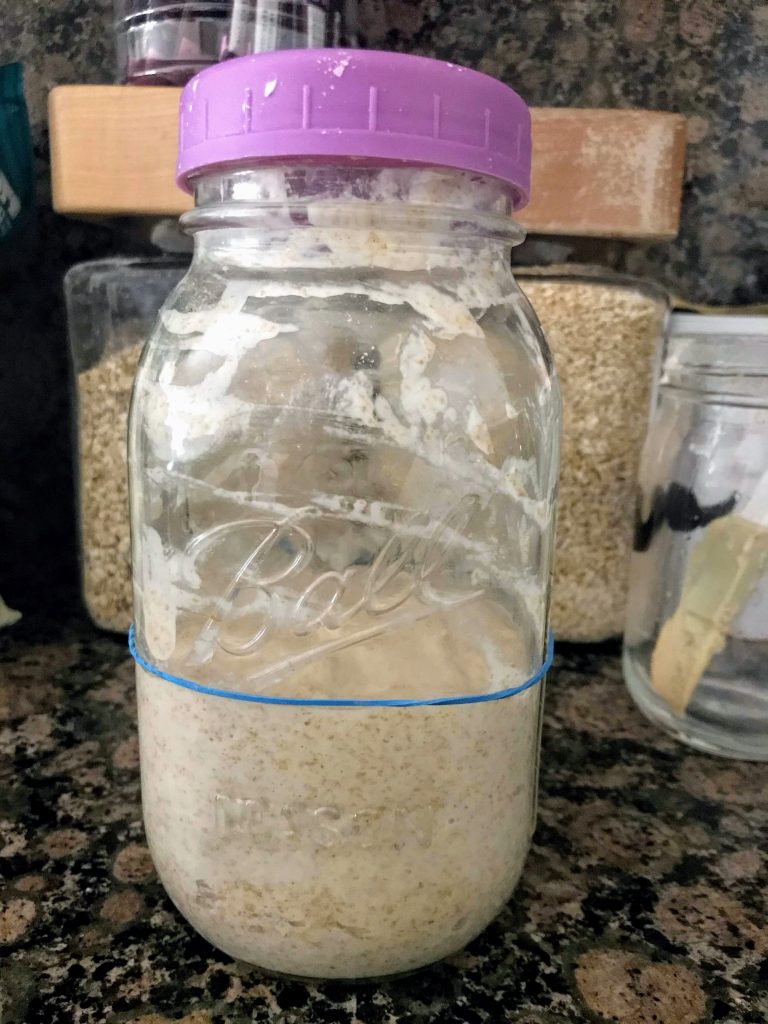
Refreshed sourdough starter 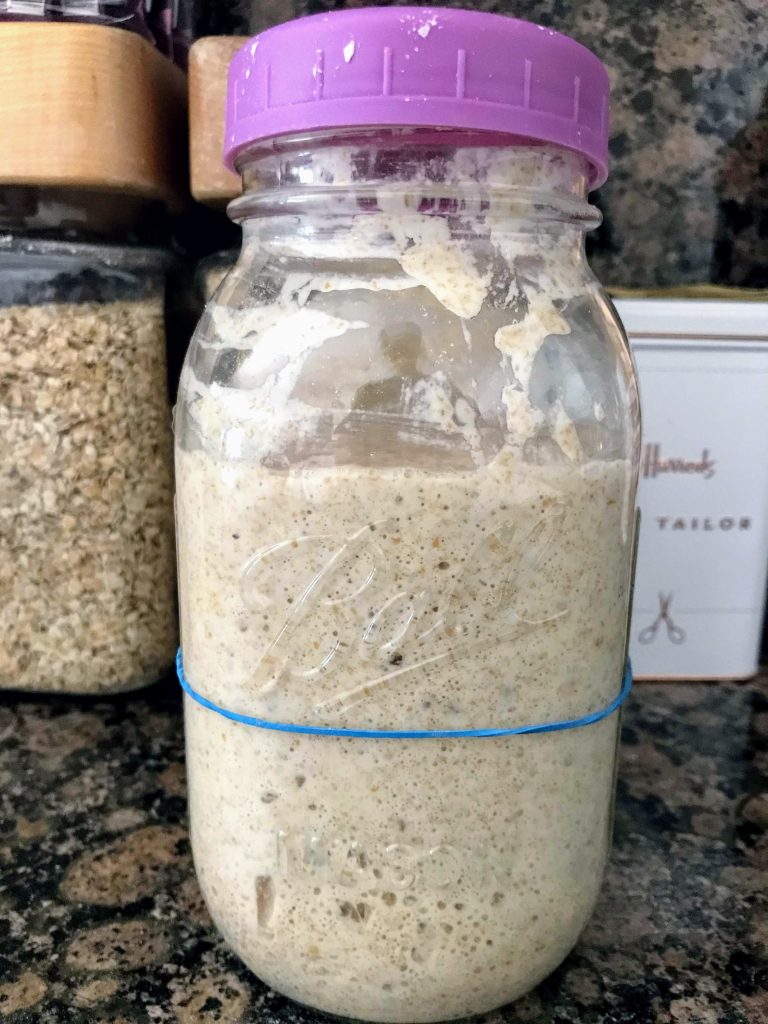
Sourdough starter refreshed and after 4 hours
Happy looking sourdough starter, bake away!

*More on Sourdough discards:
Sourdough discards can be kept in a separate jar, and store in the refrigerator unfed for about 2-3 weeks and be used for recipes using sourdough discards. Over time, a layer of water may accumulate at the top of the starter, there is no need to pour it out, just give the mixture a good stir before using.

